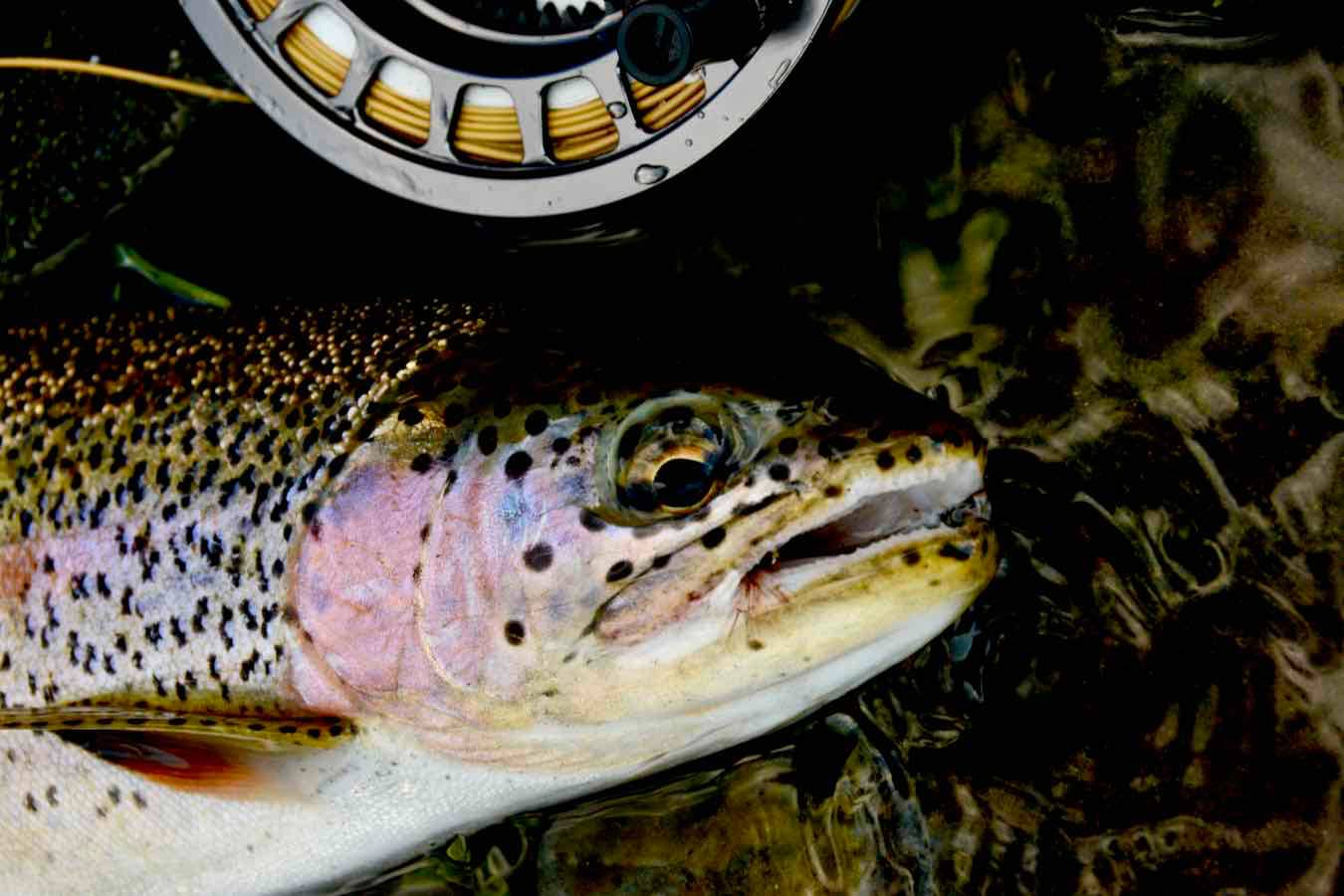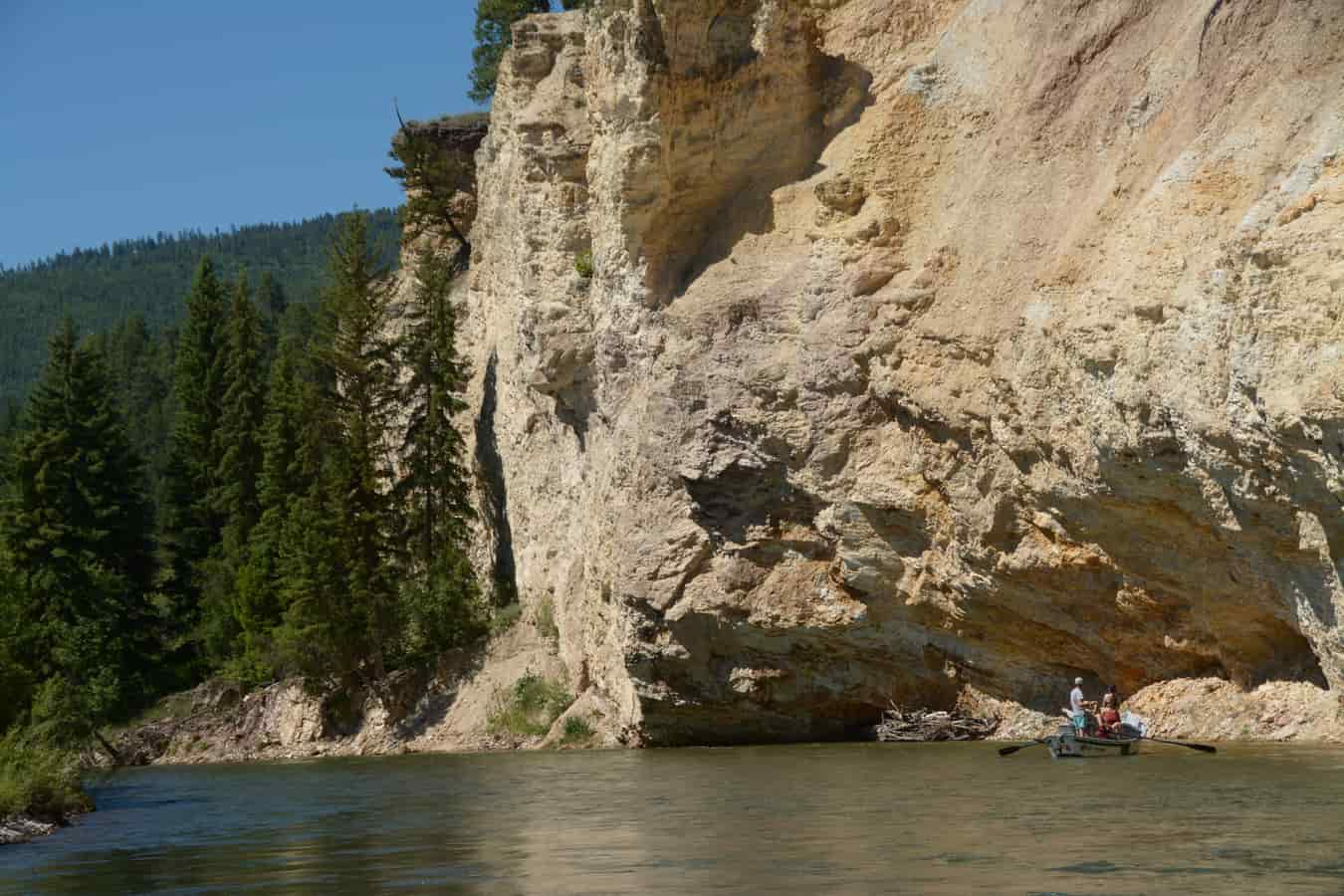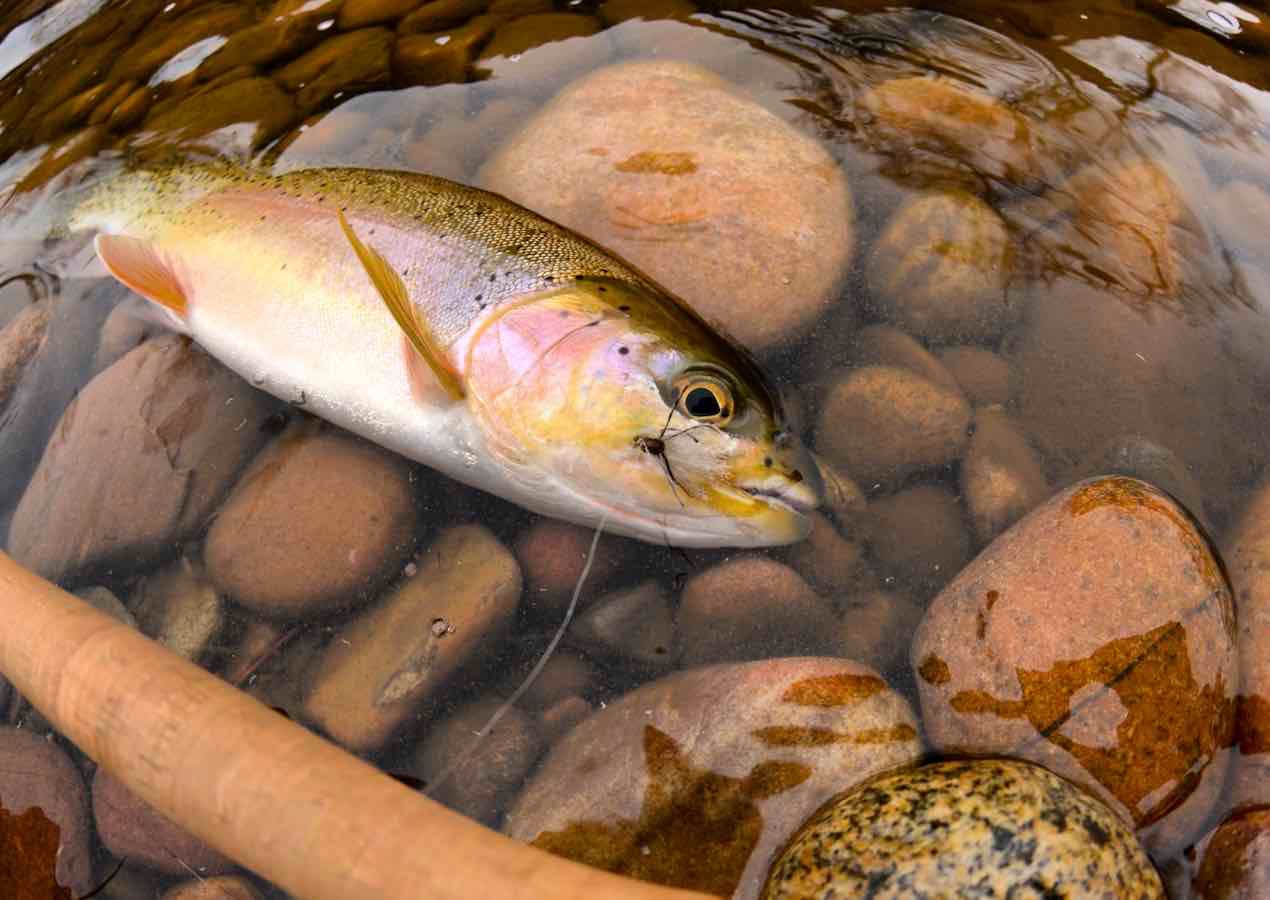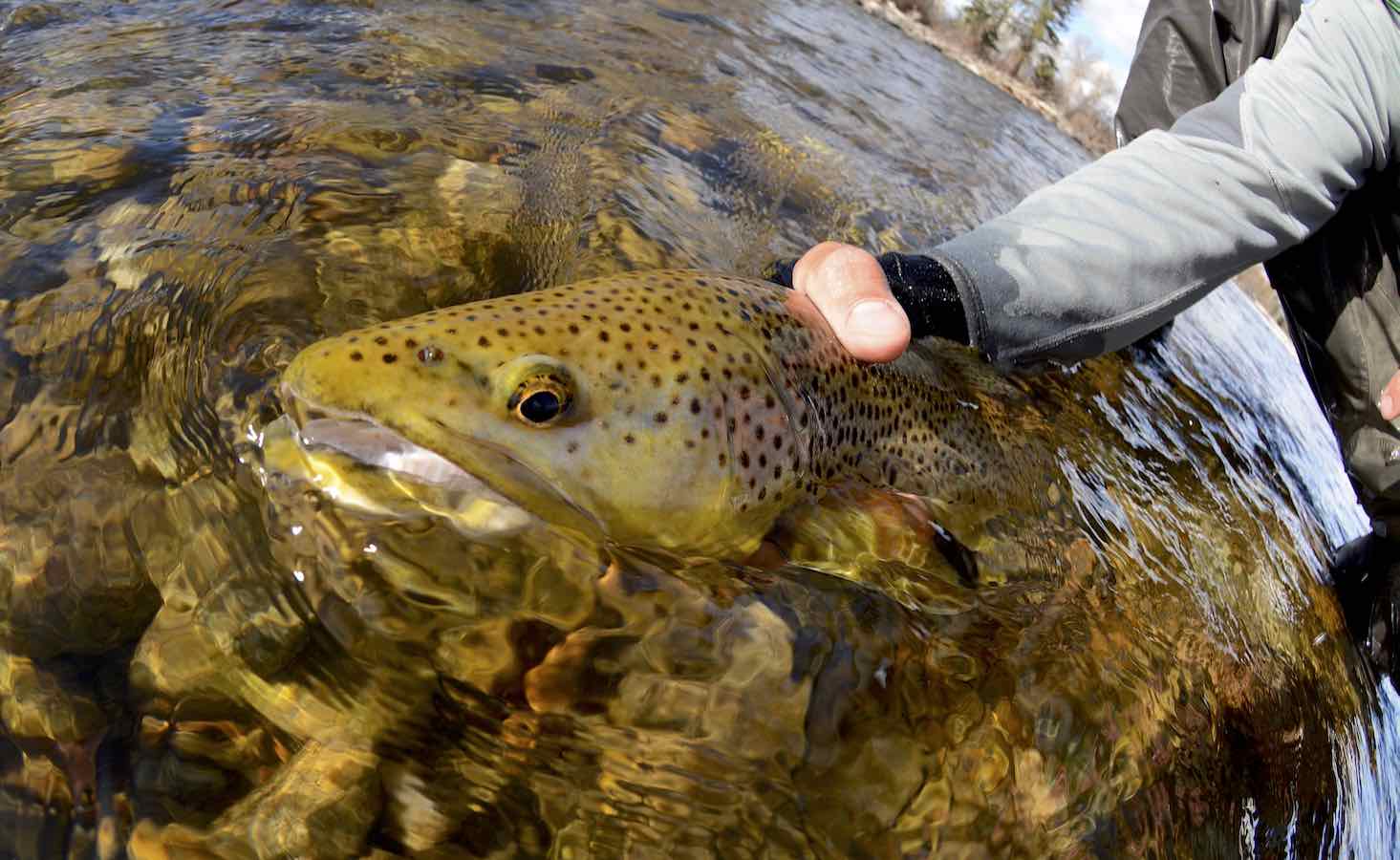Just Around the Corner: Early Season Dry Fly Fishing in Montana

Leave the Emerald City at first light and you can throw big dries to western Montana’s hefty trout by mid-afternoon.
It’s still fall, and winter is on its way, but it won’t be too long (just a few months) before Montana’s first significant hatches begin.
Fortuitously, some of the state’s best early season dry-fly fishing occurs in the far western portion of the state, in and around Missoula, a trout addicted town surrounded by five blue-ribbon rivers and what seems like 500 quality brew pubs.
If you live in Seattle and want in on that early season action, all you have to invest is an eight-hour drive and a few days to fish. I know this well: I went to college in Missoula, have fished and lived around the state for 30 years, including stints in the Gallatin Canyon, the Bitterroot Valley, and the Madison Valley; I wrote the book Fly Fisher’s Guide to Montana; and I’ve spent the past 10 years back in Missoula, casting flies as often as possible on all the local waters.
Western Montana is Big Sky Country’s banana belt. Winter fades quicker here, and spring arrives sooner, than anywhere else in the state. That stimulates aquatic insect activity and those hatches—a mix of small midges and blue-wing olive mayflies, followed by larger skwala stoneflies and March brown drakes—get the fish feeding heavily, And it’s not subsurface stuff—on warm winter days midges bring trout to the surface; by late February the first skwalas are moving around and the dry-fly option only gets better as spring arrives; blue-wing olives and March browns come off at midday hours from late March through May and, at times, seem to bring every fish to the top.
Wading anglers can easily get in on the action, especially on the Bitterroot River and Rock Creek, but those floating in a raft or driftboat, who can access an entire river even in elevated spring flows, enjoy better success.

The Rivers
The Bitterroot and Clark Fork rivers run right through Missoula, offering in-town action for those who don’t want to venture far. But it pays to drive a little ways. The Bitterroot heads south of Missoula, in the gorgeous Bitterroot Valley, and offers great opportunities throughout its 70-some mile course. Whether you wade or float, there’s lots of good turf wherever you look—pocket water, braided channels, deep pools, long riffles, and glassy glides, especially on the lower river where trout can get technical and only the best presentations get eaten.
The river has rainbows, cutthroats, browns, and about eight gazillion whitefish. The trout can push past 20 inches, but the average fish comes in at about 15 inches long. These are all wild trout, and the cutthroats are native. After a long winter spent eating midge larvae and the occasional adult, these trout are hungry and ready to put on weight. When the skwalas come off these fish rise for size-6 and 8 dries. As the season progresses, they’ll have seen a lot of flies floating over their heads and anglers might need to scale back from 3X and 4X tippet, to 4X or 5X, and use size-8 and 10 imitations.
Don’t expect to see tons of skwalas on the water or in the air—it’s not like the salmonfly hatch. No worries—it takes only a few bugs to get trout looking up. Want to know if the skwala is happening? Turn over some rocks in shallow water and inspect woody debris near the edge of the stream. If those bugs are around you’ll find nymphs crawling on the underside of those rocks and logs/limbs. That’s a sure sign that fish are looking for them, too.
The Clark Fork also offers great spring fishing. You can throw above or below town with equal success. This is a big river, very intimidating to the fledgling fly fisher. But fear not—plenty of action takes place near the banks with trout, sipping blue-wing olives one after the other, sometimes in pods. If you float the river you can reach all the available water, which includes massive eddies and pools, typically lined with foam. When fishing the Clark Fork, remember, foam means fish. That’s because adult midges, mayflies, and even skwalas collect in that foam. The trout merely poke their noses through the surface to grab a bite. This can be technical fishing consisting of 6X tippet and size-20 dries; or, when March browns and skwalas are about, anglers might get away with 4X tippet and size 8 dries.
The fish are a mix of rainbows and cutthroats, with only a few browns thrown in on the side. Bonus: spring offers good opportunities to catch northern pike in the backwaters and side channels. If you want to do just that your guide likely can provide an 8-weight rod, a five-inch long fly, and a wire leader. The rest is between you and the water wolf. That can be a challenge. Pike to 20 pounds are possible.

Prefer pocket water and a more intimate setting? Rock Creek has your name on it. This river runs 60 miles through a nearly pristine corridor with abundant wildlife, including bighorn sheep, elk, mule deer, whitetail deer, bald eagles, moose, and black bear. Rock Creek isn’t known for giant trout, although the average size of its fish seems to be on the increase. Fourteen to 17-inchers are part of the mix.
You’ll find browns, rainbows and native westslope cutthroat here, and they’ll rise for dries beginning on the warmest late-February days. That early, they’ll look for midges. By mid-March blue-wing olives are squarely in the mix. Around late March extending through April, March browns come off. Seeing scads of trout eating those bugs can be an amazing sight, like somebody flicked a switch and motioned every trout to the surface at once. You can get technical while matching this hatch, but the trout are eager and throwing nothing more complex than a size-14 or 16 Parachute Adams scores big results. Of course, emergent mayfly imitations and the ubiquitous Purple Haze produce nicely, too. Look for this hatch to pop between 11: 30 a.m. and 4 p.m.
Don’t overlook the skwala on Rock Creek. When these fish get on the big bug you can catch good numbers. Again, afternoon hours are prime, with most of the activity occurring between 1 and 5 p.m.
Lower Rock Creek is located just 25 miles from Missoula. Anglers can fish their way up the river for 60 miles, finding abundant public access throughout. The creek offers tons of riffles and deep runs, pools and side-channels. You can cast across it in most places but it isn’t a trickle. This is fun fishing, usually with lots of action, but its fish can get freaky after seeing flies floating over their heads all spring. If they do just that, low-profile, technical imitations often crack the code. Your guide will have some “secret weapons” on hand, sneaky patterns that trick educated fish. Don’t be afraid to ask about them.
The lower Blackfoot River meets the Clark Fork about five miles east of Missoula. Good fishing for browns, rainbows and cutthroat extends upriver for 50-some miles. The average fish here measures 14-to 16 inches long, but know that larger fish exist. Any given cast could bring up a 20-some inch brown or bow… or a 30-some inch long bull trout. You can’t specifically fish for bull trout, but they prefer the same streamers you’ll throw for rainbows and browns.
Much of the Blackfoot runs between canyon walls. You can find every sort of trout water known to man. And the hatches bring fish up in all of these places. Blue-wing olives are abundant on the Blackfoot, and the skwala comes off in good numbers, too. You can find March browns and midges also. Maybe the most exciting way to fish the Blackfoot is with streamers when the water turns to beautiful green, not really clear but not blown out. Fish can find your fly easily enough, and they aren’t too shy because that color in the water gives them confidence.
You can fish the Blackfoot by wading the banks, but in most places it’s steep and rocky. Best to let a guide pull the oars while you and a buddy or a spouse or kid cast from the bow and stern, working those Sparkle Minnows, Buggers, and Double Gonga’s, along the banks.

One of the best ways to make this a quick trip to God’s Country is to leave early in the day, whether exiting Seattle from the north or south. If you leave at 5 a.m., you won’t deal with much traffic and could be casting on the lower Clark Fork by about 3 or 4 p.m (MST).
If you were to book a few days with Joe and Tammi Cummings, who own Missoula River Lodge, you can leave Seattle early in the a.m. and unpack your gear that afternoon, possibly leaving time for a late day dry-fly session on the lodge’s 100 private acres of riverfront property. Staying at Missoula River Lodge means you are in prime position to fish any of these five rivers, depending on which offers the best options on a particular day. The guides are experienced and super dialed into hatches and water conditions—they give you the best shot at early season dry-fly success.
When not on the water you can kick back in the lodge and enjoy views of the Bitterroot Mountain Range while watching the water drift by. And you can enjoy some seriously fine dining, all prepared by executive chef Carrie Nowlen, who was named one of America’s top 100 chefs by the Washington Post. Relatively early dinners leave plenty of time to test out Missoula’s brewery scene. Coming out of a long winter, dry-fly action, local brew, and a great music scene is a combination that’s hard to beat.
Reach out to Greg ([email protected]) if you’d like more information about Montana’s early season fly fishing opportunities.











